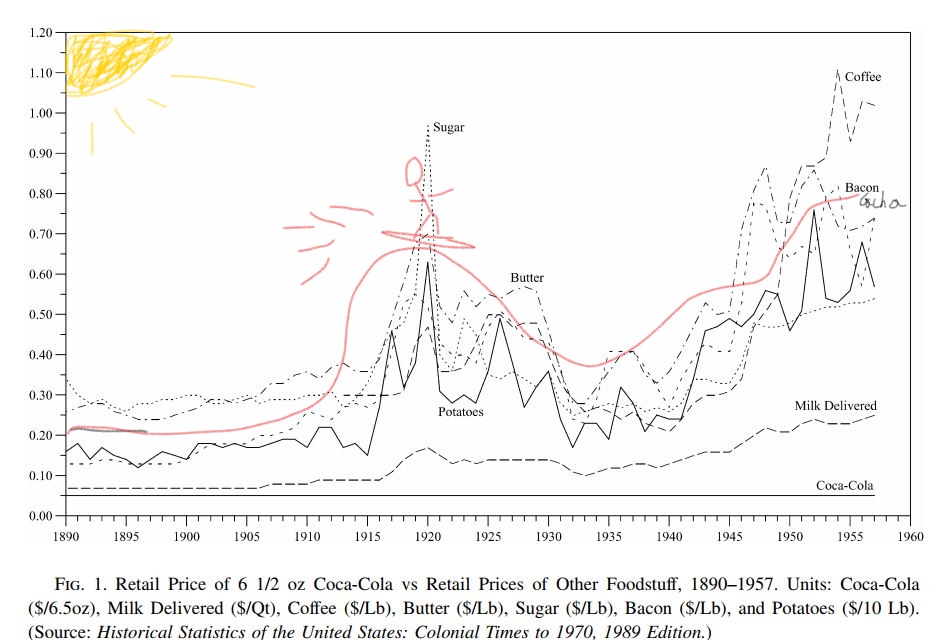In the 1950’s, Peruvian inflation forced Coca-Cola to charge more per bottle of Coke. Unfortunately, their vending machines required physical updating to accept a new and larger domination. Instead, Coke devised a probabilistic system: the machine would charge the same amount as before, but randomly refuse to give a bottle. This raises the expected price of a bottle Coke while forgoing any physical updating. But a miscellaneous software engineer has a better idea: raise the price of Coke, but instead randomly give the money back.

Our Surfer is ‘risk loving’
The increase in price for a given ‘bottle draw’ would equal the expected payoff of a lower priced ‘bottle draw’ that randomly refuses to give a bottle. This is an interesting solution to player frustrations in gacha (“I didn’t get anything of value when I opened a pack!”).
Anyone care to reckon which model one would perform better: Higher draw price but gives money back or lower draw price but sometimes doesn’t give anything?